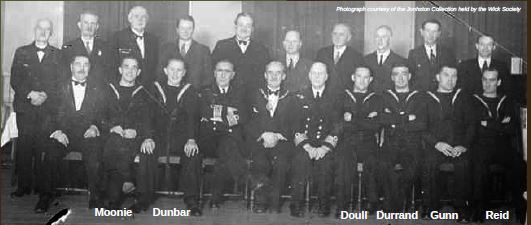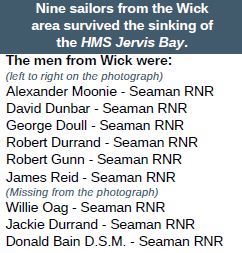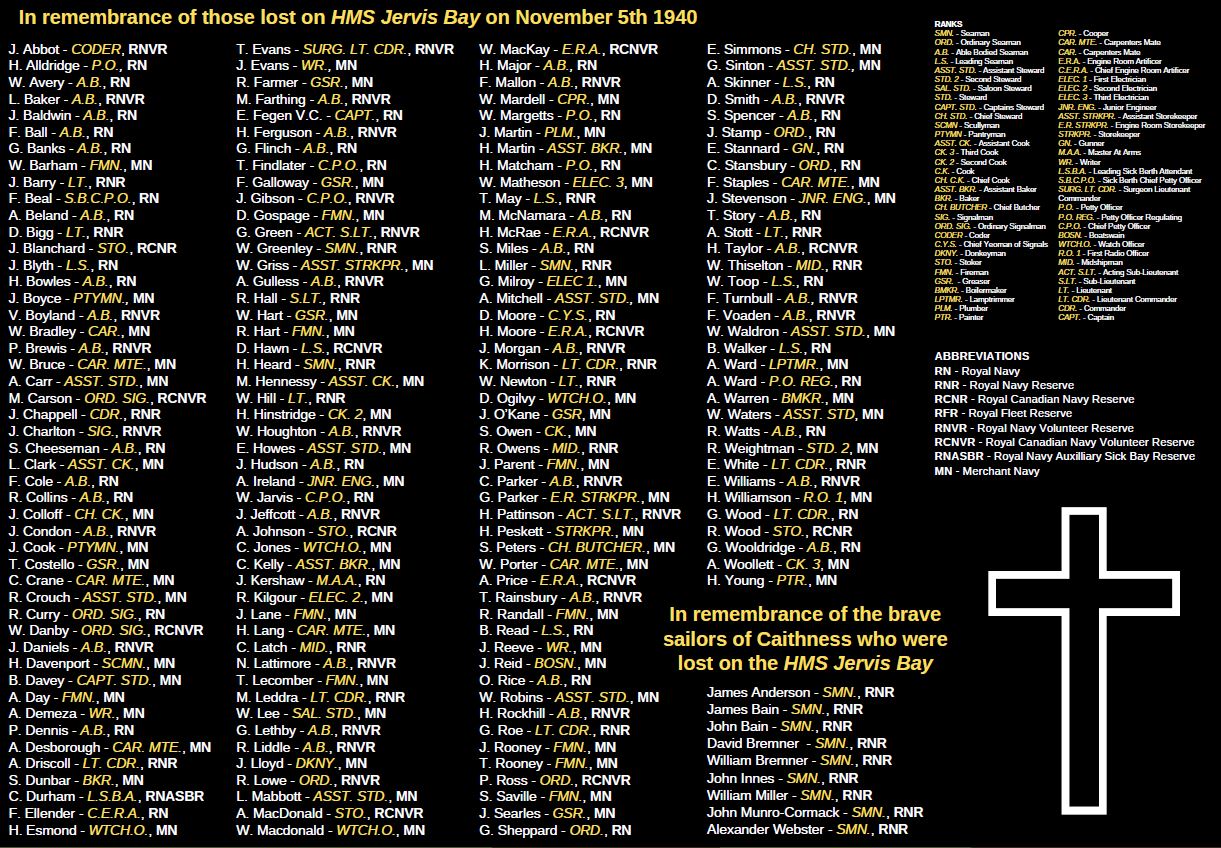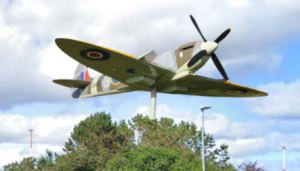Site 19. HMS Jervis Bay
In November 1940 HMS Jervis Bay, commanded by Captain Edward S. Fegen, had been tasked with escorting convoy HX84 from Halifax, Nova Scotia, to Great Britain. The convoy consisted of 38 merchant vessels from six nationalities, totalling 225,728 tons GRT (Gross Register Tonnage). The Jervis Bay was in fact a converted passenger liner that had been fitted with seven 6” naval guns of 1890’s vintage, and two 3″ Quick Fire guns, and was now classed as an Armed Merchant Cruiser.

On November 5th, at 4:45pm, the RMS Rangitiki, one of HX84’s merchant ships, reported that she could see a warship approaching the convoy from the north. It soon became apparent that it was the German Pocket Battleship, Admiral Scheer, and the convoy was ordered to scatter. The Jervis Bay turned to port, increased speed and steered directly towards the Admiral Scheer. Fegen knew his ship was outclassed by the German heavy cruiser, but decided that the only way the convoy would survive was if the Jervis Bay engaged the Admiral Scheer to buy time for the merchant ships to scatter and for dusk to fall.
As Captain Fegen headed the Jervis Bay towards the Admiral Scheer the heavy cruiser opened fire, hitting the Jervis Bay with its third salvo, the shells impacting on the foredeck hitting behind the bridge and above the wheelhouse. This destroyed the bridge, knocked out the gun director, the rangefinder, and all primary control gear. The gunnery transmitting station was also made useless and electric power to the guns was severed. Jervis Bay’s guns could now only fire independently, but the Admiral Scheer was still out of range of its 6″guns. The Jervis Bay charged forward firing its guns continuously at the heavy cruiser, completely undaunted by the incoming fire from the German ship and the likely fate that awaited her, but all the while drawing Admiral Scheer’s attention away from the scattering convoy.
Closing in on the Admiral Scheer, the Jervis Bay now posed a threat to the German warship, so she brought all her heavy, medium and light guns to bear on the doomed ship. As shells ripped through the Jervis Bay she valiantly continued to fight for almost 2 hours until eventually she succumbed to the massive damage inflicted upon her. She rolled over and slipped beneath the waves taking Captain Fegen, 33 officers and 156 members of the ships company with her. Only 65 of the crew managed to survive.
Due to the heroic actions of the Jervis Bay’s crew only 5 merchant vessels from HX84 were sunk by the Admiral Scheer.
For his actions that day Captain Fegen was posthumously awarded the Victoria Cross, but really this medal for gallantry was for the entire crew. The citation reads:
“for valour in challenging hopeless odds and giving his life to save the many ships it was his duty to protect. On the 5th of November 1940, in heavy seas, Captain Fegen, in His Majesty’s Armed Merchant Cruiser Jervis Bay, was escorting thirty-eight Merchantmen. Sighting a powerful German warship, he at once drew clear of the Convoy, made straight for the Enemy, and brought his ship between the Raider and her prey, so that they might scatter and escape. Crippled, in flames, unable to reply, for nearly an hour the Jervis Bay held the German’s fire. So she went down: but of the Merchantmen all but four or five were saved.”

One of the surviving sailors from Wick, Seaman Donald Bain was awarded the Distinguished Service Medal in February 1941 for “courage and devotion to duty” during the battle with the Admiral Scheer. The John O’Groat Journal reported: “This is the first war decoration won in this war by a Wick man and it is fitting that it should be in connection with such a gallant action as that of the Jervis Bay, on which 18 Caithness men were serving, nine of whom lost their lives.”




